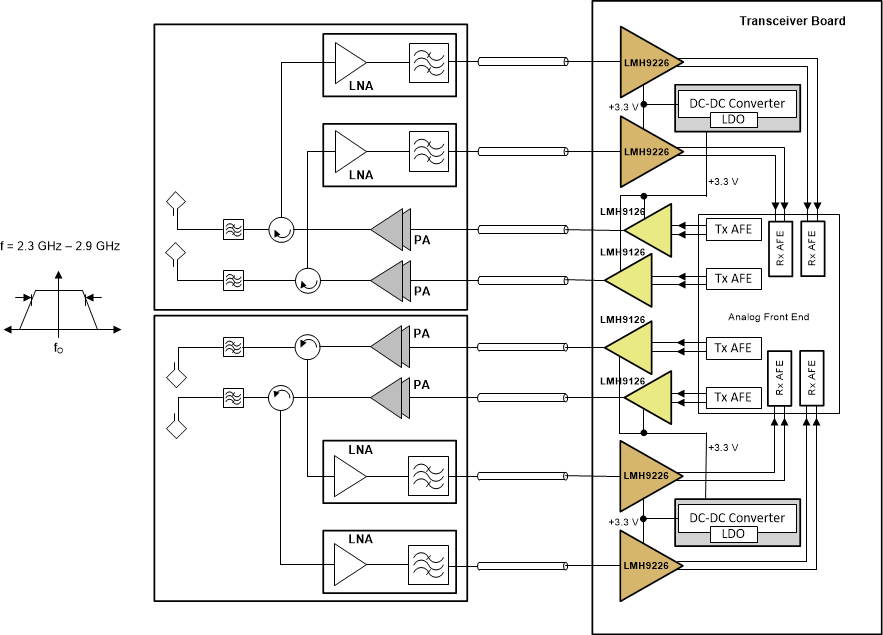SNLS634 June 2020 LMH9126
PRODUCTION DATA.
8.2 Typical Application
The LMH9126 is typically used in a four transmit and four receive (4T/4R) array of active antenna system for 5G, TDD, wireless base station applications. Such a system is shown in Figure 18, where the LMH9126 is used in the transmit path as an active balun that converts differential DAC output from Tx AFE to single-ended signal. Also shown in the figure is the application of LMH9226 chip, which is the counter-part of LMH9126 in the Receive path.
 Figure 18. LMH9126 in a 4T/4R 5G Active Antenna System
Figure 18. LMH9126 in a 4T/4R 5G Active Antenna System The 4T/4R system can be scaled to 16T/16R, 64T/64R, or higher antenna arrays that result in proportional scaling of the overall system power dissipation. As a result of the proportional scaling factor for multiple channels in a system, the individual device power consumption must be reduced to dissipate less overall heat in the system. Operating on a single 3.3-V supply, the LMH9126 consumes only 375 mW and therefore provides power saving to the customer. Multiple LMH9126 devices can be powered from a single DC/DC converter or a low-dropout regulator (LDO) operating on a 3.3-V supply. A DC/DC converter provides the most power efficient way of generating the 3.3-V supply. However, care must be taken when using the DC/DC converter to minimize the switching noise using inductor chokes and adequate isolation must be provided between the analog and digital supplies.